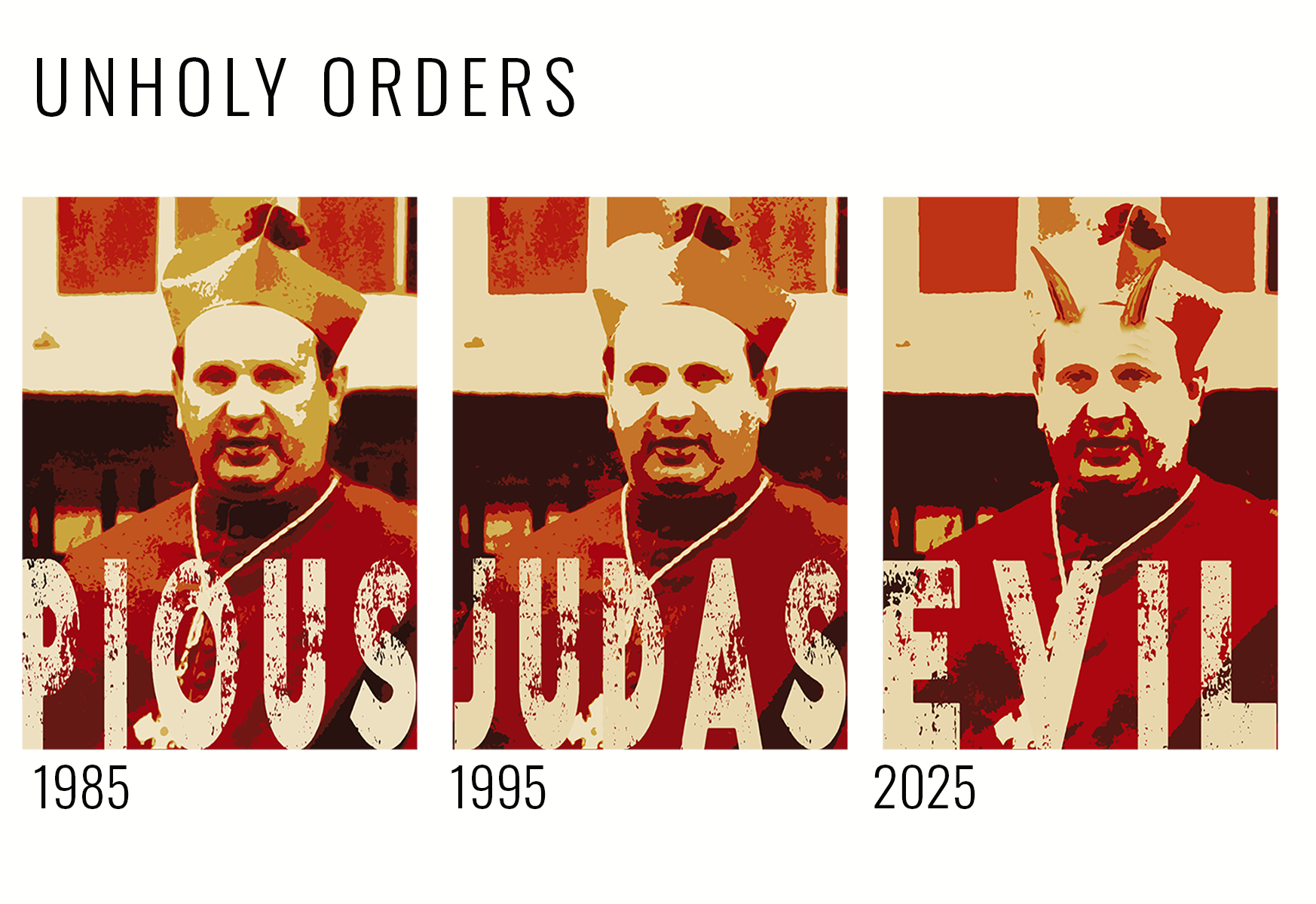One artwork often leads naturally to the next. Mary the Redeemer followed The Ascension of Commerce as I continued to think about religion and the retail palette — colours that, when mixed, could be read as the blood and drama of Christ. The subject stayed with me and brought me back to my early years in Ireland, where the Catholic Church was an overwhelming presence.
What surfaced most strongly was the hypocrisy surrounding Bishop Eamon Casey, whose fall from grace in the 1990s was the first public fracture in the image of clerical sanctity. Remembering this moment led me to reflect on the cultural memory of the Church in Ireland more broadly, and how it has transformed over the last fifty years — from reverence, to betrayal, to condemnation.
I chose to explore this transformation in the form of a triptych, adopting the visual language of the poster to suggest public ownership of consciousness, propaganda, and protest. Using Casey as a proxy for the institution itself, each panel employs a reduced palette and a single word provocation — PIOUS (1985), JUDAS (1995), EVIL (2025) — mapping the collapse of clerical authority into accusation.
This work condenses a slow but seismic cultural shift into three frames.
The Portrait – Eamon Casey
The central figure is Bishop Eamon Casey, once one of Ireland’s most recognisable churchmen. Charismatic, media-friendly, and trusted, Casey embodied the pious image of Irish clerical leadership in the 1970s and ’80s. Yet his scandal in 1992 — the revelation that he had fathered a son in secret — became a turning point. His downfall was the first visible chink in the Church’s armour. Through him, Irish society began to glimpse the scale of hypocrisy at work, and many in the congregation found the confidence to question what had previously seemed untouchable.
1985 – PIOUS
The first panel evokes this pre-scandal period of reverence. In the mid-1980s, the Church still controlled schools, hospitals, and charitable life; politicians deferred to bishops on social policy; families marked their milestones through its sacraments. PIOUS captures this atmosphere of obedience and moral authority, embodied in figures like Casey.
1995 – JUDAS
The second panel situates us after the Casey scandal, when betrayal was no longer whispered but exposed. The Brendan Smyth abuse case (1994) and the narrow divorce referendum (1995) both symbolised rupture. Trust had fractured; clerics were no longer beyond reproach. JUDAS speaks to that sense of betrayal — not only by individuals but by an entire institution complicit in cover-ups and hypocrisy.
2025 – EVIL
The final panel brings us to the present, after decades of revelations. The Ferns, Ryan, and Murphy Reports laid bare systemic abuse and concealment. Public consciousness shifted from betrayal to outright condemnation. Marriage equality and abortion referendums passed with little deference to clerical opinion. The horns and the word EVIL represent this cultural verdict: the revered priest transformed into caricature, accusation, and damnation.
Presented as a triptych, the work echoes the format of a devotional altarpiece while inverting its message. What once framed the sacred now narrates decline: reverence collapses into betrayal, and betrayal hardens into condemnation. Through Casey’s downfall — the first fracture — the full weight of the Church’s hypocrisy came into view, and Ireland’s collective memory was permanently transformed.
